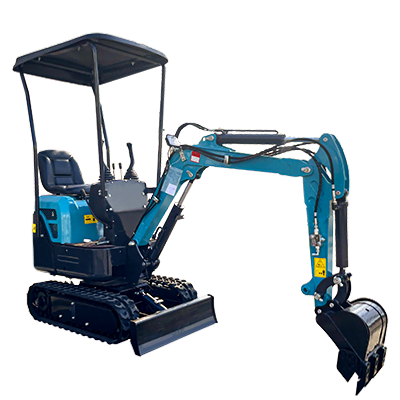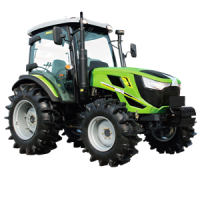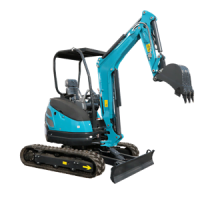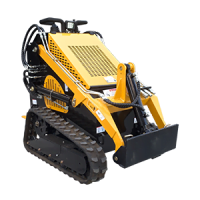Introduction
Un grappin rotatif pour excavatrice est un accessoire incroyablement utile qui peut augmenter la polyvalence et la productivité de votre excavatrice. Ce grappin vous permet de saisir, faire pivoter et déplacer facilement des matériaux sur les chantiers de démolition et de construction. Maximiser son potentiel nécessite de choisir le grappin adapté à votre excavatrice et à votre application, un fonctionnement et un entretien appropriés, une utilisation habile de la fonction de rotation et une compréhension des procédures de sécurité. Suivez ces conseils pour tirer le meilleur parti de votre grappin rotatif pour excavatrice.
Choisir le bon grappin

La première étape clé consiste à sélectionner un grappin rotatif pour excavatrice qui soit correctement adapté à la fois à votre excavatrice de base et à l'application prévue. Tenez compte des facteurs suivants :
- Catégorie de poids de l'excavatrice – Le grappin doit être adapté au poids opérationnel de votre excavatrice pour éviter toute surcharge.
- Poids du grappin – Les grappins plus lourds vous permettent de déplacer des matériaux plus gros/plus lourds, mais réduisent la portée de l'excavatrice.
- Taille du grappin – La largeur d’ouverture et la capacité doivent être adaptées à la taille moyenne des matériaux que vous manipulerez.
- Type de matériau du grappin – Choisissez des grappins en acier trempé pour les applications de démolition et de manutention de ferraille. Les grappins composites sont plus légers mais moins durables.
- Couple du rotateur – Les rotateurs à couple plus élevé (8 000 pi-lb et plus) sont plus adaptés à la manutention de matériaux volumineux et denses.
| Taille du grappin | Largeur d'ouverture | Longueur des dents | Couple de rotation |
|---|---|---|---|
| Petit | 32-48 pouces | 48-96 pouces | Jusqu'à 8000 pi-lb |
| Moyen | 48-66 pouces | 96-180 pouces | 8000-10000 pi-lb |
| Grand | 66+ pouces | 144-264 pouces | 10 000+ pi-lb |
Fonctionnement correct
- Prenez le temps de vous familiariser avec le contrôle précis du grappin à l'aide du ou des joysticks. Cela permet une manutention plus rapide et plus fluide du matériel.
- Évitez de surcharger le grappin ou l'excavatrice au-delà de sa capacité nominale. Une surcharge peut endommager la structure.
- N'utilisez pas les dents du grappin pour tirer ou soulever des objets comme un seau normal. Cela peut plier/casser les dents. Soulevez et repositionnez plutôt.
- Lors de la rotation de charges inégales, procédez lentement pour éviter les mouvements de balancement incontrôlés.
- Assurez-vous que le matériau est solidement en contact avec le sol avant de tenter de soulever et de déplacer des tas de débris. Le fait de traîner ou de faire glisser des matériaux entraîne leur usure.
Maîtriser le rotateur
Le rotateur est ce qui rend ce grappin si polyvalent pour la manutention des matériaux. En devenant expert dans le contrôle de la rotation, vous pourrez ajuster rapidement le positionnement des débris. Voici quelques bonnes pratiques de rotation :
- Lors de la saisie d'une charge, faites-la pivoter pour équilibrer la répartition du poids avant de la soulever. Cela évite les risques de basculement.
- Les torsions et les rotations pendant le mouvement vous permettent de « travailler » pour détacher des tas de débris denses.
- Faites pivoter les objets pour trouver les points de contact optimaux avant de les soulever. Cela évite les glissements.
- Le contrôle de rotation de précision vous permet de placer les matériaux exactement là où vous le souhaitez sans réglage.
| Matériel | Prise et rotation optimales |
|---|---|
| Rondins/poutres | Centre utilisant plusieurs points de contact sur la longueur |
| Barres d'armature/poteaux | Saisir l'extrémité et faire pivoter perpendiculairement aux dents |
| Tuyaux | Point central avec dents entièrement insérées |
| Ferraille | Saisissez le point d'équilibre et faites pivoter la surface plane sur les dents |
| Brosses/mottes | Centre de gravité bas grâce aux bords des dents |
Questions d'entretien
L'entretien du grappin rotatif de votre excavatrice est essentiel pour maximiser sa durabilité et sa longévité sur le chantier. Voici une liste de contrôle des principales tâches de maintenance :
- Inspectez quotidiennement les dents et les bords pour déceler toute trace d'usure, de fissures ou de dommages. Remplacez immédiatement les dents endommagées.
- Lubrifiez quotidiennement tous les graisseurs conformément aux spécifications du fabricant pour éviter la corrosion et l'usure.
- Inspectez régulièrement les raccords et flexibles hydrauliques pour détecter les fuites ou les sertissages. Resserrez les raccords ou remplacez les flexibles endommagés.
- Vérifiez que les boulons ou les fixations du grappin et du boîtier du rotateur ne sont pas desserrés. Resserrez si nécessaire.
- Mesurez l'usure des dents de l'engrenage du rotateur. Remplacez les engrenages si les profils des dents présentent des motifs d'usure inclinés.
- Vérifiez le bon fonctionnement du rotateur en faisant tourner les dents à vide. Un grippage ou un blocage indique des problèmes.
Donner la priorité à la sécurité

Bien que les grappins d'excavatrice améliorent considérablement l'efficacité de la manutention, ils introduisent également des dangers supplémentaires dont les opérateurs et les travailleurs à proximité doivent être conscients :
- Marquez clairement la zone de l’arc de rotation du grappin et éloignez les travailleurs pendant l’opération.
- Assurez-vous que la base est solide avant de faire pivoter des charges élevées afin d'éviter les accidents de basculement. Avancez lentement.
- Faites attention aux débris qui tombent pendant la manutention. Portez un EPI comme un casque de sécurité à tout moment.
- Lorsque vous quittez la cabine, abaissez/soutenez complètement les dents du grappin sur le sol à l'aide d'une palette ou d'un bloc.
Il est impératif de suivre ces mesures de sécurité pour éviter les blessures graves par écrasement ou les accidents par chute de matériaux. Désignez et donnez les moyens à un responsable de la sécurité du site de renforcer les protocoles de sécurité des grappins rotatifs.
Conclusion:Grappin rotatif pour excavatrice
En sélectionnant la conception optimale du grappin rotatif pour excavatrice, en perfectionnant les compétences de contrôle, en entretenant l'accessoire et en priorisant les politiques de sécurité du site, les entrepreneurs peuvent maximiser le potentiel de cet outil polyvalent de démolition/déblaiement de site. Une utilisation appropriée des capacités de rotation du grappin permet une manipulation plus rapide et plus précise des débris dans les zones de travail étroites. Gardez à l'esprit ces meilleures pratiques en matière de grappin rotatif pour excavatrice afin d'améliorer l'efficacité du travail, de réduire l'usure de l'équipement et de protéger la sécurité des travailleurs sur les projets de démolition et de construction exigeants.
FAQ
De quelle taille de grappin ai-je besoin pour mon pelle?
Choisissez un grappin qui correspond à la plage de poids opérationnel et à la capacité de basculement de votre modèle d'excavatrice de base pour éviter toute instabilité ou tout dommage mécanique. La largeur d'ouverture doit correspondre à la taille moyenne de vos débris.
À quelle fréquence dois-je graisser le rotateur ?
Les rotateurs doivent être lubrifiés quotidiennement via les graisseurs. Utilisez une graisse multi-usages de grade NLGI 2, sauf indication contraire du fabricant.
Quand dois-je remplacer les dents ?
Inspectez les dents à chaque changement de poste pour déceler les fissures, les courbures, les trous ou l'usure excessive. Remplacez immédiatement les dents individuelles si nécessaire. Les dents sont considérées comme complètement usées lorsqu'elles sont réduites à 1/3 de leur taille d'origine.
Comment éviter les pannes hydrauliques ?
Utilisez un liquide hydraulique de haute qualité et changez-le selon le calendrier du fabricant afin de minimiser la contamination des composants. Inspectez régulièrement les flexibles pour détecter les fissures ou les fuites et remplacez les flexibles endommagés.
Est-ce que je peux endommager mon excavatrice si je surcharge le grappin ?
Oui, le dépassement de la capacité nominale peut surcharger la flèche, le bras et le système hydraulique de l'excavatrice. Cela peut entraîner des pannes ou des accidents de basculement. Connaissez les limites de votre équipement.





-1.png)